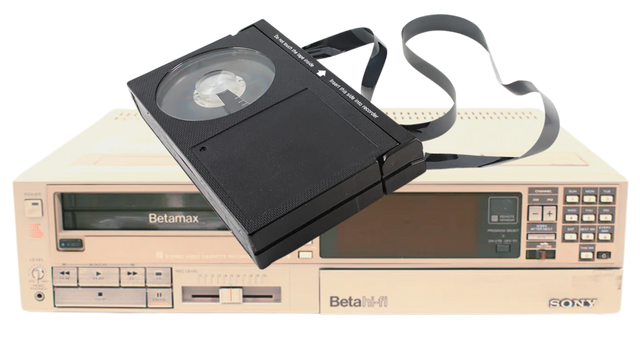What Is Sticky Shed Syndrome?
If you’ve ever tried to play an old VHS tape and heard screeching, seen glitchy video, or had the tape get stuck entirely, you may have encountered sticky shed syndrome. It’s a chemical breakdown where the magnetic coating on the tape absorbs moisture and becomes tacky, making the tape literally stick to itself—or worse, to the inside of your player.
Sticky shed syndrome is most common in older magnetic formats like VHS tapes, 8mm tapes, and even MiniDV tapes. And while it sounds like the end of the road for your home movies, there is hope.
What Causes Tapes to Break Down?
Tapes affected by sticky shed often feel damp, leave residue behind, or emit a screeching sound when played. This happens when the binder—the glue that holds the magnetic material to the tape—starts absorbing humidity from storage conditions over decades.
This breakdown is especially common in brands like Maxell, Sony, and Ampex from the 1980s and '90s. If you’re unsure whether your tapes are at risk, try gently pulling the tape by hand. If it feels gummy or resists movement, stop immediately to prevent permanent damage.

Can Sticky Tapes Be Saved?
Yes—but it takes experience and care. One method used by professionals is controlled tape baking, where the tape is gently heated at low temperatures for hours to remove moisture. Done correctly, this temporarily restores the tape so it can be safely played and digitized.
This isn’t something you want to try at home in a kitchen oven. It requires professional equipment and precise timing to avoid melting the tape or damaging internal components. Once baked and cooled, tapes are transferred to digital formats using specialized equipment to minimize playback wear.
Instead of risking further damage, many people choose a professional video tape conversion service to let experts handle sticky tapes properly.

Stuck in the VCR? What to Do Next
If you’ve already tried playing a tape and it got jammed, don’t panic. Unplug the VCR, avoid yanking the tape out, and read our guide on what to do if your tape is stuck in the VCR. Most tapes can still be saved—even if the outer shell is cracked or the tape has torn.
The most important thing is to avoid multiple playback attempts. Each run through a VCR or camcorder increases the risk of losing whatever content is still on the tape.
FAQ: People Also Ask
What is sticky shed syndrome in tapes?
Sticky shed syndrome is the chemical breakdown of the binder that holds magnetic particles to the tape. It causes the tape to become sticky, squeal during playback, and often shed debris that clogs equipment.
Can sticky shed tapes be played?
No. Attempting to play a tape with sticky shed can damage both the tape and your VCR or audio deck. The tape may stick, stretch, or snap during playback.
Can sticky shed syndrome be fixed?
Yes, but only temporarily. Professionals may use controlled processes like “baking” to stabilize the tape long enough to safely digitize the content. Permanent repair is not possible.
How do you prevent sticky shed syndrome?
You can’t reverse sticky shed, but you can slow it down by storing tapes in a cool, dry environment with consistent temperature and humidity levels.
What should I do with tapes affected by sticky shed?
Do not attempt DIY cleaning or playback. The safest choice is to send them to a professional digitizing service that can repair and transfer the content before it’s lost.
Recommended Next Reads
VHS Mold: How to Handle Moldy VHS Tapes Without Ruining Them
Broken VHS Tape? Here’s How to Rescue and Digitize It
Mold on VHS Tapes? Here’s How to Save Your Memories Before It’s Too Late
Your Wedding Video Is Worth Watching Again
VHS Tape Repair: How to Rescue Your Memories the Right Way
📧 Want more tips like this?
Subscribe to Heirloom emails to learn how to preserve your priceless memories. Get discount codes for expedited shipping, quality digitizing, and secure cloud storage. We never spam, and it’s easy to unsubscribe at any time.


